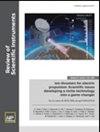AC Zeeman effect in microfabricated surface traps
IF 1.7
4区 工程技术
Q3 INSTRUMENTS & INSTRUMENTATION
引用次数: 0
Abstract
Quantum processors and atomic clocks based on trapped ions often utilize an ion’s hyperfine transition as the qubit state or frequency reference, respectively. These states are a good choice because they are insensitive in first order to magnetic field fluctuations, leading to long coherence times and stable frequency splittings. In trapped ions, however, these states are still subject to the second order AC Zeeman effect due to the necessary presence of an oscillating magnetic field used to confine the ions in a Paul trap configuration. Here, we measure the frequency shift of the 2S1/2 hyperfine transition of a 171Yb+ ion caused by the radio frequency (RF) electromagnetic field used to create confinement in several microfabricated surface trap designs. By comparing different trap designs, we show that two key design modifications significantly reduce the AC Zeeman effect experienced by the ion: (1) an RF ground layer routed directly below the entire RF electrode, and (2) a symmetric RF electrode. Both of these changes lead to better cancellation of the AC magnetic field and, thus, overall reduced frequency shifts due to the AC Zeeman effect and reduced variation across the device. These improvements enable a more homogeneous environment for quantum computing and can reduce errors for precision applications such as atomic clocks.微加工表面陷阱中的交流泽曼效应
基于被困离子的量子处理器和原子钟通常分别利用离子的超精细跃迁作为量子比特态或频率基准。这些态是一个很好的选择,因为它们在一阶对磁场波动不敏感,从而导致较长的相干时间和稳定的频率分裂。然而,在被俘获的离子中,这些态仍然会受到二阶交流泽曼效应的影响,这是因为在保罗阱配置中必须存在一个用于限制离子的振荡磁场。在这里,我们测量了 171Yb+ 离子的 2S1/2 超精细转变的频率偏移,这种频率偏移是由射频(RF)电磁场引起的,射频电磁场用于在几种微加工表面阱设计中产生约束。通过比较不同的阱设计,我们发现两个关键的设计修改能显著降低离子的交流泽曼效应:(1) 直接位于整个射频电极下方的射频接地层;(2) 对称的射频电极。这两项改动都能更好地消除交流磁场,从而全面减少交流泽曼效应引起的频率偏移,并减少整个设备的变化。这些改进为量子计算提供了更均匀的环境,并能减少原子钟等精密应用的误差。
本文章由计算机程序翻译,如有差异,请以英文原文为准。
求助全文
约1分钟内获得全文
求助全文
来源期刊

Review of Scientific Instruments
工程技术-物理:应用
CiteScore
3.00
自引率
12.50%
发文量
758
审稿时长
2.6 months
期刊介绍:
Review of Scientific Instruments, is committed to the publication of advances in scientific instruments, apparatuses, and techniques. RSI seeks to meet the needs of engineers and scientists in physics, chemistry, and the life sciences.
 求助内容:
求助内容: 应助结果提醒方式:
应助结果提醒方式:


